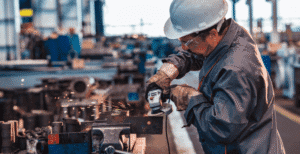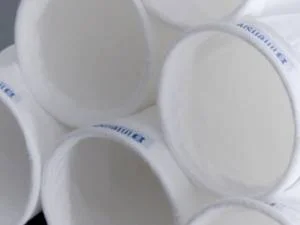Understanding Bag Filter Assemblies
Bag filter assemblies are devices that help clean liquids and gases. They remove small particles, known as particulates, from these substances. This process is important for keeping air and water clean. Bag filter assemblies work by using special bags that trap the unwanted particles as the liquid or gas flows through. There are different types of bag filters.
Each type has its own features and uses. Here are some common types:
- Mesh Filters: These filters use a fine mesh to catch larger particles. They are good for liquids with bigger debris.
- Felt Filters: These filters use soft fabric to trap smaller particles. They are effective for catching tiny bits of dirt and dust.
- Strainer Filters: These are simple filters that remove larger solids from liquids. They are often used in initial cleaning stages.
- Patronenfilter: These filters use a cylindrical shape to hold the filtering material. They can catch both small and large particles.
Bag filter assemblies play a key role in many industries, such as water treatment, food processing, and air purification. They help keep systems running smoothly by preventing buildup of dirt and debris.
Components of a Bag Filter Assembly
A bag filter assembly has important parts that help clean air or liquids. These parts work together to remove dirt and other unwanted materials. Here are the key components:
- Filterbeutel
- Filter bags trap dirt and particles.
- They are made from special materials that allow clean air or liquid to pass through.
- Different sizes and types of filter bags are available for various needs.
- They are easy to replace, which keeps the system running well.
- Housings
- Housings hold everything together.
- They protect the filter bags from damage.
- Made of strong materials, they can handle pressure and temperature changes.
- Housings often have openings for easy cleaning and maintenance.
- Support Baskets
- Support baskets hold the filter bags in place.
- They allow clean air or liquid to flow while keeping the bags steady.
- Made of metal or sturdy plastic, they provide extra strength.
- Their design helps prevent bag collapse during use.
These components play a crucial role in the filtration process. Each part helps ensure that the system works efficiently and effectively.
Types of Bag Filter Housings
Bag filter housings come in different types. These types include single-bag housings and multi-bag housings. Each type has its own features and is used for different purposes.
Single-bag housings hold one bag. They work well for smaller filtration needs. These housings are easy to use and clean. They are good for low flow rates and less complex systems. People often use single-bag housings in water treatment and food processing.
Multi-bag housings can hold several bags at once. They are suitable for larger filtration needs. These housings are efficient and can handle high flow rates. Multi-bag systems are often used in industrial applications, such as chemical processing and oil refining. They save time because they can filter more liquid at once.
Here is a simple table comparing the two types:
| Typ | Merkmale | Vorteile | Typical Uses |
| Single-bag | Holds one bag | Easy to use and clean | Water treatment, food processing |
| Multi-bag | Holds multiple bags | Handles high flow rates | Chemical processing, oil refining |
Different types of bag filter housings serve different needs. Single-bag housings are great for smaller jobs, while multi-bag housings are best for bigger tasks. Understanding these types helps people choose the right one for their filtration needs.
Selecting the Right Bag Filter Assembly
Selecting the right bag filter assembly is important for getting clean water or air. When choosing a bag filter assembly, there are several factors to consider. These factors help ensure that the filter works well for the specific needs of a project. Here are some steps to follow when making a decision.
- Determine the flow rate: The flow rate is how much liquid or air goes through the filter. It is important to know the required flow rate for the system. This helps in selecting a filter that can handle that amount without clogging.
- Check the micron rating: The micron rating shows how small the particles the filter can catch. A lower micron rating means the filter catches smaller particles. Knowing the size of the particles to be filtered helps in selecting the right micron rating.
- Consider material compatibility: The bag filter assembly must be made of materials that can handle the liquid or air passing through it. Some materials work well with certain chemicals, while others do not. It is essential to choose materials that will not break down or react.
- Evaluate the installation space: The space where the bag filter assembly will go is also important. Some filters are larger than others. It is essential to measure the area to ensure the filter fits.
- Look into maintenance needs: Different bag filter assemblies have different maintenance requirements. Some need more frequent changes than others. Understanding the maintenance needs can help in choosing a filter that is easy to take care of.
By following these steps, anyone can select the right bag filter assembly for their needs. It is important to think about each factor carefully to ensure the filter works effectively.
Installation and Maintenance of Bag Filter Assemblies
Installing and maintaining bag filter assemblies is important for keeping them working well. Proper care helps them last longer and perform better. Here are some easy steps to follow for installation and maintenance.
First, ensure the area is clean and ready for installation. Check the bag filter assembly for any damage before starting.
- Install the filter according to the manufacturer’s instructions.
- Make sure all connections are tight to prevent leaks.
- Position the filter correctly to ensure good airflow.
After installation, regular maintenance is key to keeping the bag filter assembly in top shape.
- Check the filters often for dirt and wear.
- Replace the filters when they are dirty or damaged.
- Clean the housing regularly to remove dust and debris.
Following these steps helps maintain optimal performance. A well-installed and cared-for bag filter assembly can save time and money in the long run.
Cost Considerations: 20-Inch Bag Filter Pricing
20-inch bag filter pricing can vary based on several factors. These factors affect how much a buyer will pay. Understanding these can help in making smart choices.
- The brand of the filter affects the price. Well-known brands may cost more.
- The type of material used in the filter can change the price. Some materials are more expensive than others.
- The filter’s lifespan can influence cost. Filters that last longer may have a higher upfront price but save money over time.
- The place where buyers purchase the filters can impact the cost. Some stores may offer better deals than others.
- Buyers can save money by purchasing in bulk. Buying more filters at once usually lowers the price per filter.
- Sales and discounts can reduce costs. Keeping an eye out for deals can lead to savings.
By considering these factors, buyers can find the best 20-inch bag filter options for their needs.
High-Pressure Bag Filters
High-pressure bag filters are special tools used in industries to clean air or liquids. They work well in tough situations where other filters might not. Their strong design helps them handle high pressure and keep working effectively.
High-pressure bag filters are made to fit specific needs. They can be used in different areas, such as:
- Öl und Gas: They remove impurities from oil and gas, helping to keep equipment safe.
- Chemische Verarbeitung: They filter chemicals to ensure clean production processes.
- Nahrungsmittel und Getränke: They help in keeping food products safe by removing any unwanted materials.
- Pharmazeutika: They ensure that medicines are produced without contamination.
There are different types of high-pressure filters. Each type has its own purpose:
- Standard Bag Filters: These are the most common. They are simple and effective for many tasks.
- High-Flow Bag Filters: These can handle a lot of liquid at once. They are great for busy factories.
- Multi-Bag Filters: These have several bags inside. They are used when large amounts of filtering are needed at the same time.
High-pressure bag filters are perfect for demanding industrial environments. Their strong design and ability to work under pressure make them a reliable choice for many industries.
Water Bag Filter Housings
Water bag filter housings are important for water filtration systems. They help keep water clean and safe. When choosing a water bag filter housing, there are some specific requirements and considerations to keep in mind.
- Material selection is key. The housing should be made from strong and safe materials. Common materials include stainless steel and plastic. Stainless steel is durable and resists rust. Plastic is lightweight and often less expensive.
- Flow rate matters. The flow rate is how fast water moves through the filter. A higher flow rate can be good for large systems. A lower flow rate might be better for smaller systems. It is important to match the flow rate to the needs of the water system.
- Size and capacity are also important. The size of the filter housing should fit well in the space available. The capacity should match the amount of water that needs filtering.
- Ease of maintenance is another factor. The filter housing should be easy to clean and change filters. This helps ensure the system works well over time.
- Consider the environment where the housing will be used. Some materials work better in certain conditions, like high temperatures or exposure to chemicals. It is important to choose a housing that can handle the specific environment.
- Cost is a factor. Different materials and sizes come with different prices. It is important to find a balance between quality and cost.
These points help in selecting the right water bag filter housing for any water filtration system.
Innovationen in der Beutelfiltertechnologie
Innovations in bag filter technology focus on making filters better. Recent advancements show how new materials and designs can improve performance. These changes help filters last longer and work more efficiently.
Some key advancements include:
- New Materials: Companies now use stronger fabrics. These fabrics can handle higher temperatures and resist chemicals. This helps the filters last longer in tough conditions.
- Better Designs: Engineers have created designs that allow for better airflow. This means the filters can catch more dirt and dust with less energy.
- Easy Maintenance: Some new filters are easier to clean. This makes it faster and cheaper to keep them in good shape.
- Smart Technology: New filters can now connect to apps. This allows users to monitor how well the filters are working. They can get alerts when it’s time to clean or replace them.
These innovations in bag filter technology make filters more effective. They also reduce costs for users over time. The future of filtering looks bright with these advancements.
Abschluss
Selecting the appropriate bag filter assembly is very important for effective filtration. The right bag filter helps remove dirt and particles from liquids. It works well in different industries, like food and beverage, pharmaceuticals, and water treatment. Choosing the right size and material for the bag filter is key. It ensures the filter lasts longer and works better. Regular maintenance also helps keep the filter functioning properly. Overall, a good bag filter assembly leads to cleaner liquids and better processes.



